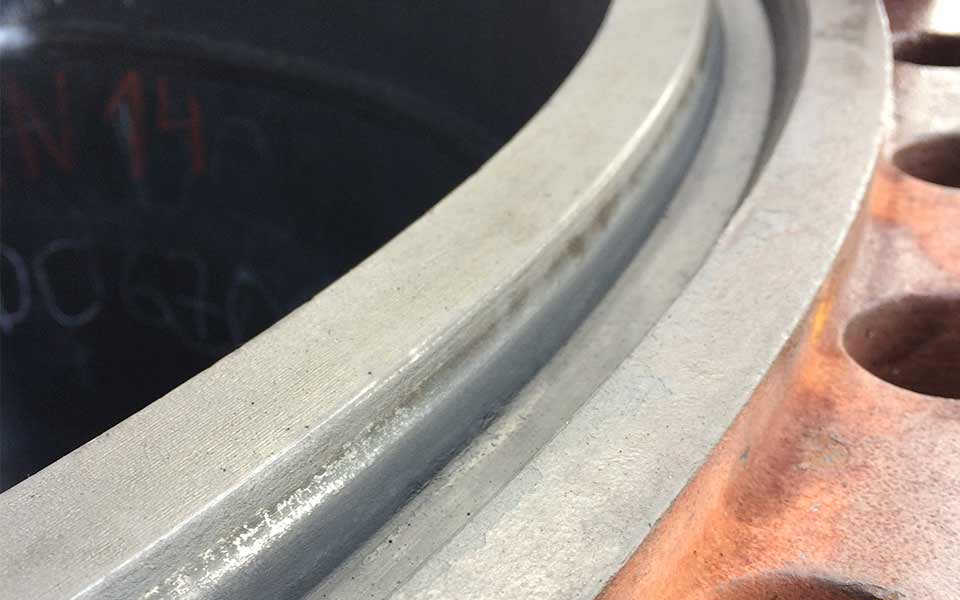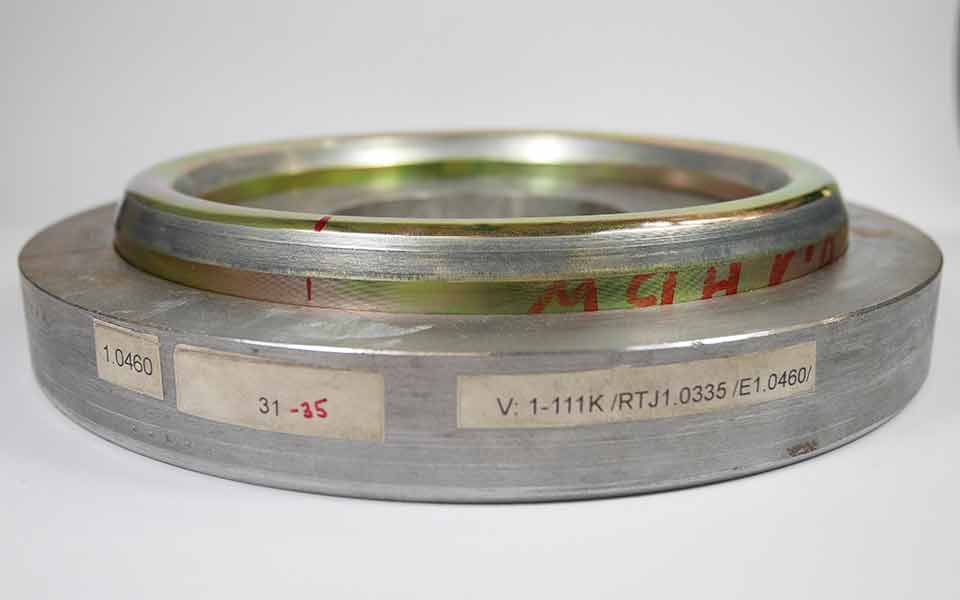DESIGN AND CALCULATION OF METALLIC GASKETS
For hardly measurable, smallest leakage rates
Metallic gaskets are present in a large variety of geometric shapes and materials in industry and in sealing technology. The field of application of metallic gaskets begins where soft material gaskets made of fibres, graphite and elastomers no longer work reliably enough at the operating pressure or temperature to be sealed or where there is a risk of gasket failure. Metallic gasket constructions have the potential to become really “tight”, whereby “tight” at this point may be understood to mean “no longer measurable (qL < 10-10 mbar * l * s-1)” small leakage rates.
Stand generally, rectangular flat gaskets, crowned profile gaskets, round wire seals, lens seals, double cone seals and ring-joint seals
are available in countless materials and material combinations with and without coatings (nickel, copper, silver, …) In addition to the above-mentioned gasket types, there are several other designs such as spit-edge or C-ring gaskets.
The metal jacketed gasket may also be included in the circle of metal gaskets. Although a soft material is incorporated into the gasket in this gasket design, the sealing effect itself is purely metallic with all the advantages and disadvantages of a metallic seal.
Calculation and design is our know-how
KLINGER Engineering has provided a technical solution for the design of sealing connections with metallic bevelled gaskets for all metallic gaskets available on the market.


We have decided to re-examine and re-evaluate the forming and sealing behaviour of metallic seals, taking into account all material properties such as yield point and hardness. This is because the calculation and design of metallic sealing gaskets is by no means trivial compared to other gasket types.
At this point we offer you a variety of mathematical solutions and designs
- Sealed joints with double cone seals


- Sealed joints with lens seals DIN
- Sealed joints with ring joint gaskets according to ASME
- Sealed joints with crowned profile gaskets
Special solutions through know-how
Due to our know-how and experience, we are able to calculate and evaluate almost any special solution using the most modern calculation methods. With our three in-house laboratories (mechanical laboratory, chemical laboratory and pilot plant), it is also possible to verify the calculation results and feasibility with regard to production technology by means of component tests.
If, in addition to strength, tightness is also to be considered, the calculation of flanged joints is best carried out according to DIN EN 1591-1 or, somewhat more complex, in combination with additional or supporting numerical simulation (FEA). At this point we would like to point out that all other currently used sets of rules are not suitable for the determination of reasonable installation values or the expected sealing properties under real operating conditions. Explicitly included here is the Taylor-Forge method, which at first glance suggests that the assembly, testing and design conditions should be considered, but is by no means suitable for determining whether a system can actually be assembled in such a way that it can meet the leakage requirements of all load situations considered.
In the course of our calculations, the most effective preload force is defined and at the same time a prediction of the plastic deformation of the sealing flanks is output. At the same time, on the one hand, the tightness is always guaranteed and on the other hand, a progressive plastification of the sealing surfaces of the flanges is limited. Or we can tell you when mechanical processing of the sealing surfaces becomes necessary.





